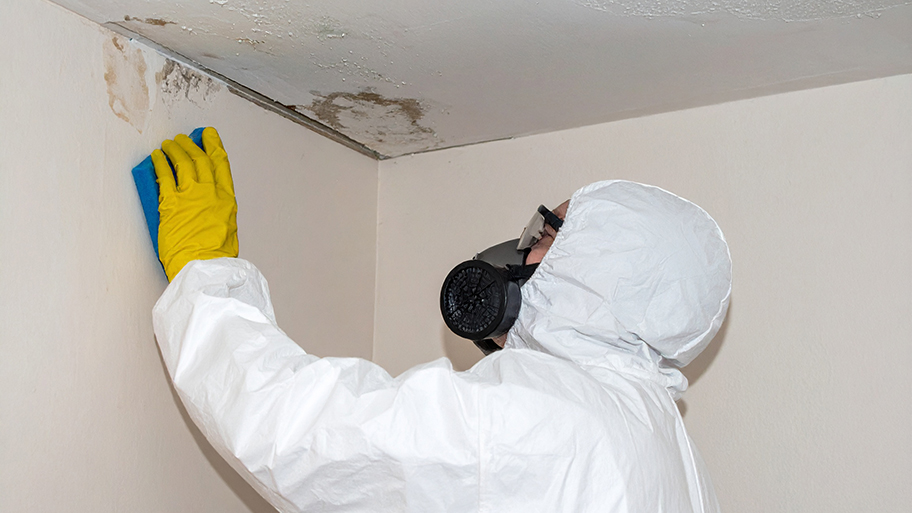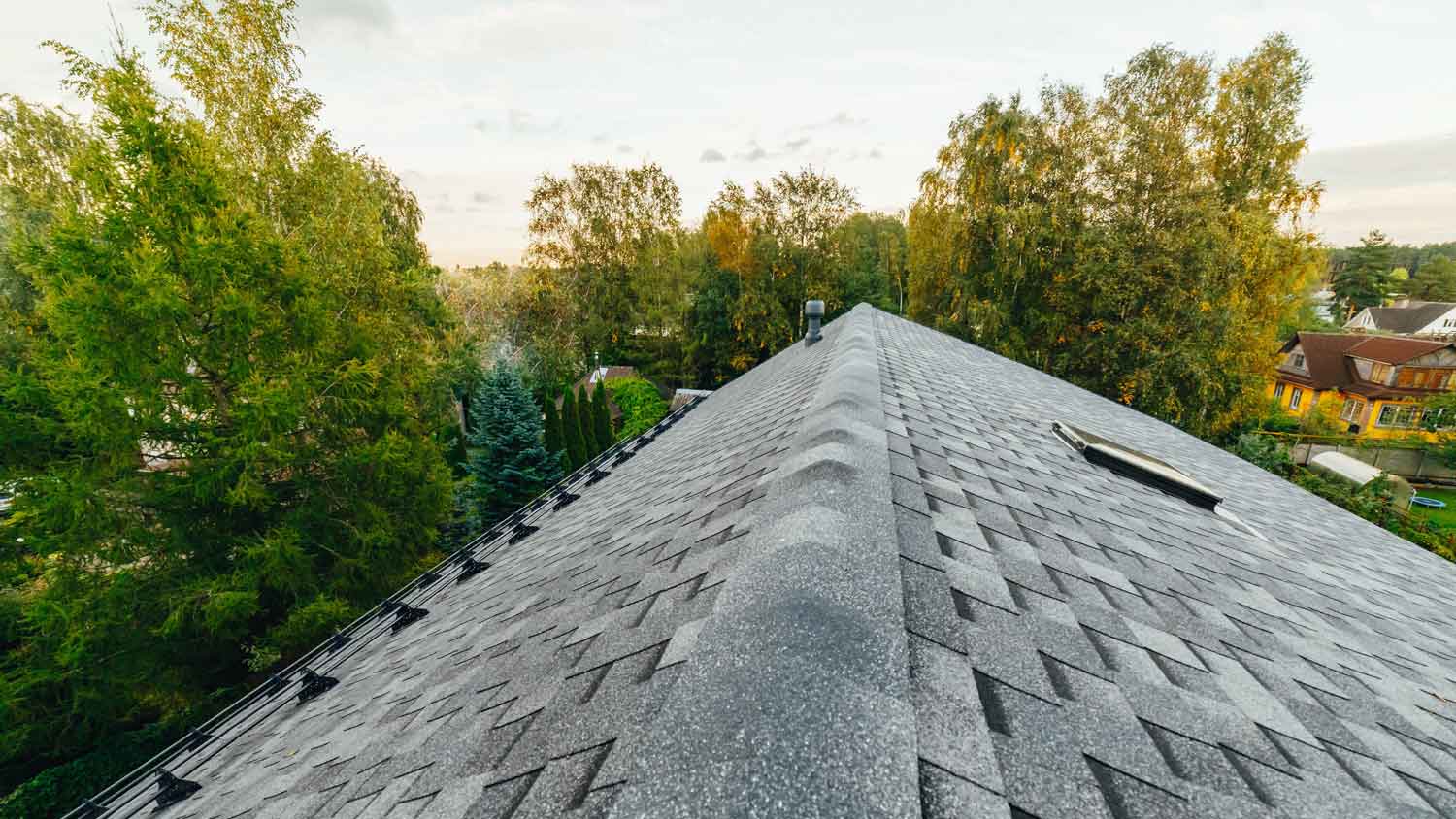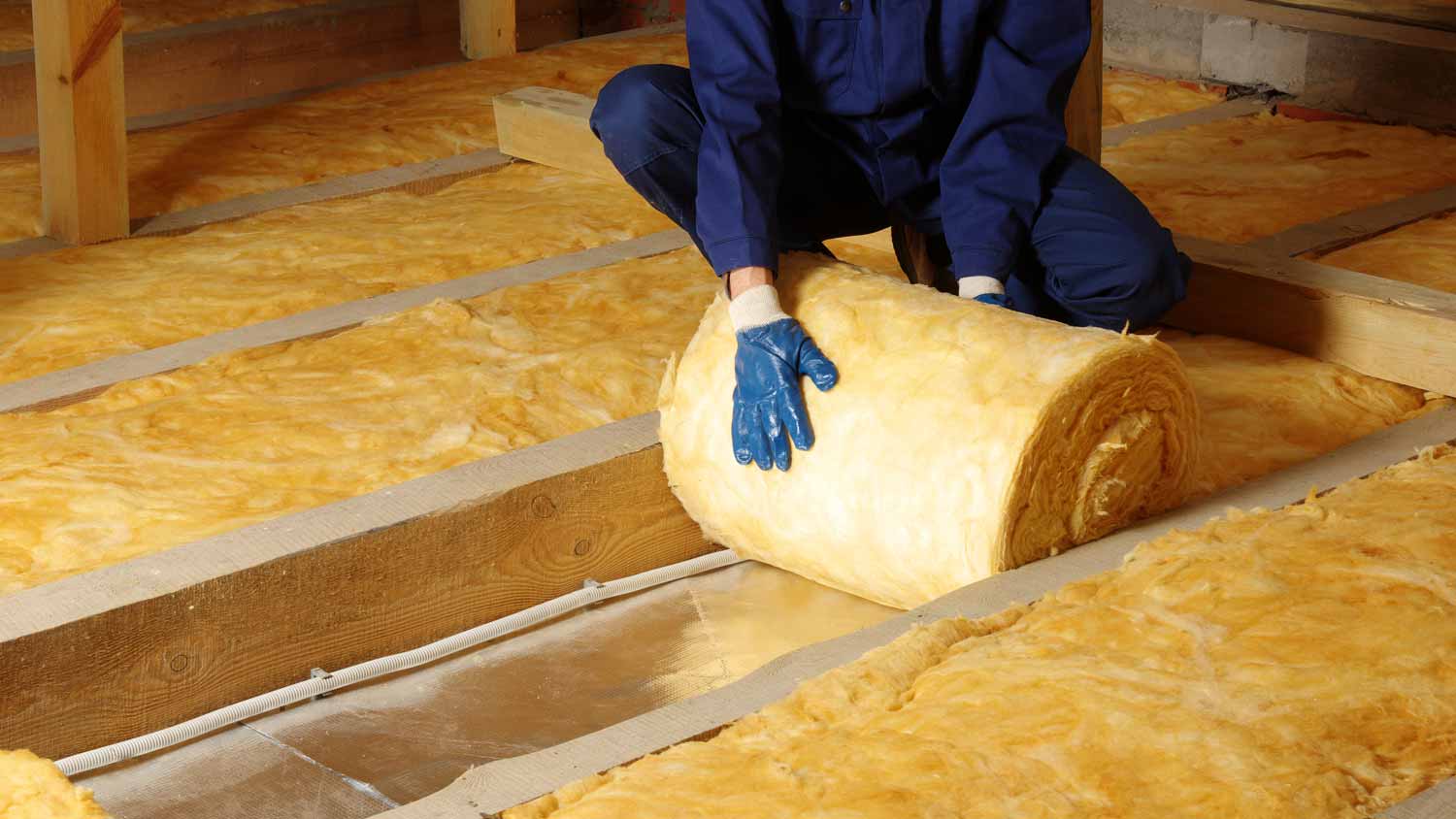
Mold remediation cost can quickly escalate. But if you have mold in your home, the cost for mold remediation is worth it.
Learn what’s lurking behind your walls


Mold refers to several species of fungi, which occur naturally.
Asbestos refers to a set of mineral fibers that were historically used in building materials.
Mold typically appears after water damage, as it needs humidity to thrive.
Asbestos was banned from home manufacturing in 1977 after it was discovered to be carcinogenic.
Even if you’re usually very hospitable, mold and asbestos are two houseguests you should always kick out. One is a naturally occurring fungus that thrives in humid environments; the other is a set of minerals that probably already exists in some of your home’s building materials. Both can have some serious negative effects on your home.
Learn about all the differences between mold and asbestos, including how to identify each and their respective health risks.

Mold can grow virtually anywhere conditions are right—usually within damp or decaying material, including drywall, carpeting, or wallpaper. There are also many kinds of mold species (an estimated 100,000!).
Mold tends to crop up in damp and moist places. Outdoors, mold is actually a useful component of the ecosystem, helping to break down matter. In your home, it’s less helpful.
Because mold reproduces via microscopic spores that are invisible to humans, it’s difficult to detect mold until it has found a location in your home to call its own and grow. You’re most likely to discover mold after any flooding or in places with high moisture and humidity, such as leaks in roofing, windows, or pipes.
It also grows particularly well on paper and wood products (including wallpaper), cardboard, insulation, drywall, ceiling tiles, and areas with fabric, such as carpeting and upholstery.
Mold often appears as black, brown, or gray spots. Sometimes the spots will appear slimy or fuzzy, and often grow in size over time as the mold reproduces. You might also notice a musty odor, as the scent of mold is typically the first thing people notice when they suspect a problem. A local mold inspector can test your home for fungus for $250 to $350. A professional test is the only way to know for sure if mold is present and the extent of the problem.
While you are exposed to mold every day—it grows on decaying organic matter; after all—mold inside can pose a health problem, especially for those with asthma or other respiratory illnesses, or anyone with weakened immune systems. Inside, mold can multiply rapidly and, without proper ventilation, will grow in numbers that pose a risk to humans.
Additionally, some molds produce mycotoxins, and prolonged exposure to mycotoxins has caused reports of skin rashes, fatigue, dizziness, nausea, and respiratory and eye irritation, according to the World Health Organization. You’ll especially need to worry about these types of molds in homes with very extensive water damage.

Asbestos is like mold in one regard: it is naturally occurring. However, it does not exist organically in your home; rather, it is manufactured in building materials. It is composed of a set of minerals found in a range of products and materials, such as insulation, automobile brakes, and vinyl floor tiles. These minerals include chrysotile, amosite, crocidolite, tremolite, anthophyllite, and actinolite.
Asbestos was once used much more widely than it is now; it is now heavily regulated because of the health hazards it poses, and items containing asbestos now need to be properly labeled.
Despite the health risks, it is not fully banned. Smaller bills have banned asbestos in certain items, such as corrugated paper, insulation on hot water tanks, and pipe insulation. The state of Washington bans the use of asbestos in automotive brake manufacturing. In addition, new uses of asbestos were banned—so, in short, companies can still use recycled asbestos to manufacture certain products.
In April 2019, the EPA announced a rule that would ban one particular type of asbestos, chrysotile. This material is the only known form of asbestos that is imported into the United States and is found in items such as automotive brakes and linings. The Alan Reinstein Ban Asbestos Now Act was also introduced to the Senate in May of 2022.
If you have an older home, asbestos might be present in some of the building materials. Until the 1980s, asbestos was used in many home items, such as insulation, curtains, roof shingles, textured paint, and caulking. Any home built before 1980 likely contains at least some amount of asbestos—but that’s actually OK, so long as the building materials remain undisturbed. If you are in the process of renovating your older home, you should take precautions to prevent asbestos exposure. Have a professional seal or remove any materials containing the minerals.
You won’t be able to see asbestos outright. If you are concerned that you disturbed an area of your home that might have asbestos, treat the area and the material like hazardous material and call a professional to extract a sample to be analyzed; they can identify asbestos with the help of special microscopes. The cost to test for asbestos is usually between $225 and $791.
When materials containing asbestos as disturbed, tiny fibers get released into the air; these are microscopic and, therefore, easily inhaled. Once asbestos makes its way into the lungs, it can cause inflammation and a range of other health issues, such as asbestosis, which is a scarring of the lungs that makes breathing more difficult.
Asbestos is considered a carcinogen, and heavy exposure can lead to an increased risk of lung cancer or mesothelioma, a cancer that affects the membrane of the lungs and chest cavity (the pleura).

Both mold and asbestos can cause some adverse reactions, but let’s look more specifically at their similarities and differences, so you are prepared in case either is discovered in your home.
While mold spores are not visible, mold growth looks like slimy or fuzzy black, green, or gray patches. In addition, mold stinks—literally. Any unidentified musty or foul odor could mean a mold problem somewhere in your home.
Asbestos is not visible, as it is made up of microscopic fibers that can only be identified by a professional. However, if you are renovating a home built before 1980, it’s safe to assume you might disturb some asbestos and should call in a professional before work begins to inspect your home.
An industrial hygienist or an environmental lab can evaluate your home before any demolition or renovation. They will take samples from the building and test them for asbestos; once the results come back, you will get a plan for remediating the asbestos properly to avoid exposure.
The cost for mold remediation runs between $1,125 and $3,345, on average. The price varies based on how much mold needs to be removed and which area of the home is affected. Because the presence of mold typically indicates some kind of water damage, you might need to pay for water damage restoration, which could cost over $3,000, depending on the severity of the issue. A water damage professional can provide a more accurate quote.
The cost for asbestos removal ranges from $1,164 to $3,055. If possible, a professional asbestos removal contractor might opt to seal off the asbestos rather than remove it completely, which costs 15% to 25% less than full removal.
Asbestos is expected to be present in older homes, and it’s legal to sell a house with asbestos in it, though some states may require disclosure. That said, you should share your knowledge of any known asbestos in the home (as well as any work you’ve done to seal or remove it). Since asbestos is only hazardous when it is disturbed and in the air, it shouldn't hurt the sale unless there is an active disturbance of the mineral fibers, and if that’s the case, you should fix the problem as soon as possible.
While it’s legal to sell a home with a mold problem, some states do require you to disclose whether the house has had past or current mold issues. Whether or not your state requires it, full transparency is the right thing to do. Typically, you can work out a deal with the buyer and offer to pay for mold remediation and HVAC updates.
Mayflower was an excellent choice for the complete renovation of my condominium. They knew exactly how to deal with the complexities of the condo building and management to make the project very smooth, easy and done right. From start to finish, everyone was incredibly helpful and their...
He requested I review his service, so I am following through. This week was the second service. I told him that our particular needs were that the trash cans in the living room, kitchen, and my bedroom be emptied. I explained what should go in recycling and which should go in garbage bin...
Tony was very professional and personable. He explained the damage he saw and reassured me the work to be performed. On the day of the visit he was punctual, courteous and exceeded my expectations while sharing information.
Exceptional quality of work, customer satisfaction oriented. I wanted to do interior work and was so impressed I asked for shingle roof and siding work on my home also, which came out very great. Any questions and concerns, Galaxy contractor answered my questions. Thank you guys.
Alex and his crew are great! I contracted them to move my dad and they went above and beyond!
My experience with this company did not start off 5 stars, but it certainly ended that way. Sam reached out to me and showed me that All Complete Construction does care about their customers. He listened to my complaints, understood my frustration, and went above and beyond to make it right....
Excellent sales staff and installer. Easy to work with. I appreciated that my current system was able to be activated and used.
I needed a kitchen and bathroom remodeling and these guys were the best people I could choose. They took my vision and brought it to life! Amazing customer service.
From average costs to expert advice, get all the answers you need to get your job done.

Mold remediation cost can quickly escalate. But if you have mold in your home, the cost for mold remediation is worth it.

The cost of a mold inspection might seem high, but it’s one of the best investments you can make for your health and home. Read on to learn cost-saving tips.

A damp, flood-prone basement is the perfect habitat for mold. Here's how to get rid of mold in your basement and keep it from coming back.

Knowing who to call for mold removal if you need the service goes a long way toward reducing the likelihood of the problem coming back.

Mold in your furnace can cause long-term problems for your family. If there’s mold present in your furnace, the spores will spread quickly through the home. Here’s how to take quick action to fix the problem.

Where there's moisture, there's likely to be mold. Read on for tips on how to prevent mold growth in all areas of your home.